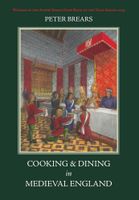Advertisement
Kitchen Lighting
Appears in
By Peter Brears
Published 2008
The amount of daylight entering a medieval kitchen was quite variable. Preparing food in the open air would make a pleasant change in good weather, particularly in small rural houses, but the actual cooking was usually carried out indoors. In the smallest houses, unglazed windows, perhaps covered with fenestrals of oiled linen stretched on wooden frames, along with open doors, would usually provide enough light for most purposes during daylight hours. If their locations allowed, major kitchens were very well lit, with long unglazed, shuttered or partially glazed windows, those at Cockermouth Castle being 24 feet high, for example. Top-light was often provided by an ornate louvre, while areas where the more complicated preparations were carried out, such as the pastry-making tables, might have conveniently placed windows close to their worktops, as at Gainsborough Old Hall.

